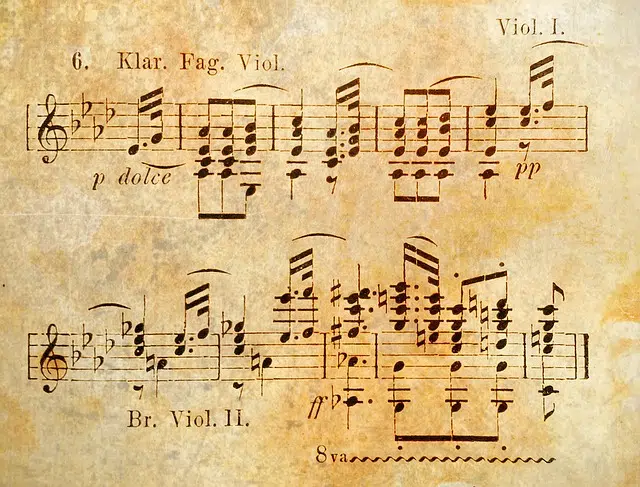
A musical figure allows a silence or a note to be graphically represented.
Before entering fully into the meaning of the term musical figure , it is necessary to know, first of all, the etymological origin of the two words that give it shape:
-Figure derives from Latin, exactly from “figure”, which can be translated as “form” or “image”.
-Musical, on the other hand, comes from Greek. And it emanates from “musike”, which is synonymous with “relating to the muses”.
A musical figure is a sign that enables the graphic representation of a note or a silence . It is, therefore, a graph that refers to a certain sound within the framework of a musical work.
Characteristics of a musical figure
Musical figures indicate the duration of the sound . For this they appeal to the color and shape of the head, the inclusion or not of the stem and the presence or lack of brackets. If the musical figure is located on a staff that already has the key established, the figure also allows the pitch of the sound to be indicated.
It is important to keep in mind that each musical figure has a corresponding silence . Therefore, the silence in question lasts the same as the linked musical figure.

In a musical figure it is possible to recognize different parts.
Its parts
When representing a musical figure, it is necessary to know the parts it has. And those are none other than the following:
-The head or nucleus, which is considered the most essential part of any musical figure. Its function is none other than to indicate what the height of the sound is.
-The body or stem that is determined by what is the pitch of the note in question. So much so that it can be represented in two different ways: downward or upward.
-The bracket, which you have to know can be unique or can be presented in the form of a group.
Examples of musical figures
The round , for example, is a musical figure that lasts four quarter note pulses. Its sign is a graph with a hollow, oval note head , without a stem. The white note , meanwhile, lasts half as long as the round one, being drawn as a hollow and oval note head with a vertical stem that lacks ornaments.
The quarter note , for its part, is a musical figure equivalent to a quarter round. It is represented with an oval note head painted black and with a vertical stem that has no ornaments. The figure that is equivalent to a half quarter note and a quarter note is called an eighth note : it is represented with an oval quarter note head, which has a vertical stem with a single bracket. The sixteenth note , on the other hand, is half-quaver in length and is charted with an oval, black head plus a vertical stem with two square brackets.
The fusa and the semifusa are other musical figures that are often used, while figures such as the maxima , the square and the garpatea , among others, are no longer used.
Taking into account the very important relationship that exists between musical figures and silences, we come across the fact that among the latter the square silence stands out, the round silence, the quarter note silence, the white silence, the of fusa, the eighth note rest or even the sixteenth note rest, for example.
